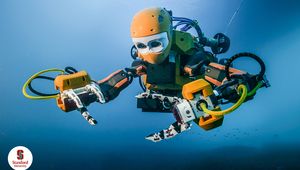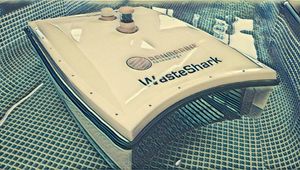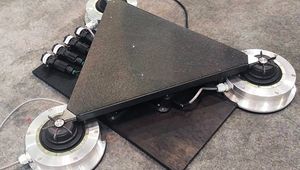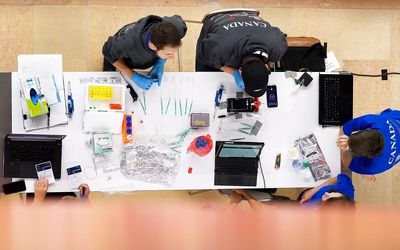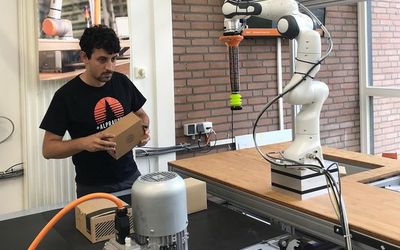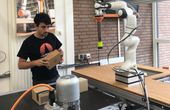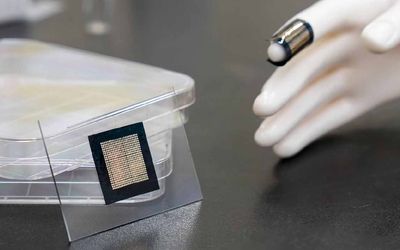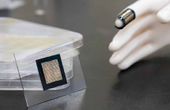Renesas RTK0EF0058D02001BJ Reference Board
SIL3 certified self-test software kit for RA family, Cortex M23 and M33, designed as a functional safety solution for industrial automation.
Technical Specifications
| Product | Reference Boards |
| Series | RX72N |
| Core | RXv3 |
| Data Bus Width | 32 bit |
| For Use With | Microcontroller |
| Operating Temperature | 0 - 50 C |
| Operating Supply Voltage | 24 V |
| Applications | Safety System for AC Servo and Drive, Remote IO, Programmable Logic Controller (PLC), Sensor and Actuator |
Overview
The board features two RX72N MCUs in an HFT (Hardware Fault Tolerance) configuration, as well as a variety of peripherals and interfaces. It is ideal for applications with cost and knowledge limitations for FSoE system development. The electronics board is optimized for BOM cost by integrating EtherCAT and FSoE in one system. It complies with SIL3 and HFT=1 standards and is based on IEC61508 standards. This reference board can be used as a template to shorten system development time. It is a valuable tool for developers of industrial applications that require functional safety.
Renesas RTK0EF0058D02001BJ Reference Board Features
RTK0EF0058D02001BJ reference board is used to evaluate the initial performance of industrial equipment and to take functional safety compliance into account by the RX72N MCU. RX72N MCUs in an HFT configuration provide high availability and fault tolerance for critical applications. Two RX72N MCUs (100-pin LQFP) are included on the reference board, together with ICE connectors and LEDs. LEDs provide visual feedback on the operation of the board, including power supply, reset, and software control.
Functional safety system configuration and evaluation are made simple by connecting system-compatible extension boards to the board. There are connectors mounted to connect general network communication boards. These are applicable to target systems, including remote IO and motor systems. ICE (E2 emulator Lite) connectors allow easy debugging and programming of the RX72N MCUs. These are mounted on the electronic board to respond to software development.
RTK0EF0058D02001BJ reference board has a CPU with two 32-bit RX72N MCUs, with a 200 MHz clock speed. It has 512 KB on-chip flash memory and 64 KB on-chip RAM. The board is equipped with 16-bit general-purpose registers, 32-bit timers, 16-bit pulse-width modulation (PWM) controller, 12-bit analog-to-digital converter (ADC), and 16-bit digital-to-analog converter (DAC). The electronic board has other peripherals, including an RS-232 interface, CAN bus interface, ethernet interface, USB host interface, microSD card slot, and debug connector.
The board is powered with a 24V power-supply source on the assumption for industrial equipment. The operating system for the RTK0EF0058D02001BJ reference board is RTOS-ready. Renesas Synergy Development Studio is used as the development tool for the reference board. The IDE provides a comprehensive set of code editing, debugging, and project management features.
Getting Started with RTK0EF0058D02001BJ Reference Board
Here are the steps on how to use the RTK0EF0058D02001BJ Reference Board:
1. Connect the board to your computer using a USB cable.
2. Install the drivers for the board from the Renesas website.
3. Open the Renesas Synergy Development Studio.
4. Create a new project in the development studio for the RX72N microcontroller.
5. Add the RTK0EF0058D02001BJ Reference Board to the project.
6. Write your code for the application that you want to develop.
7. Compile and run your code.
8. Debug your code. If there are any errors in your code, use the debugger to debug them.
Applications
RTK0EF0058D02001BJ Reference Board is used as a safety system for AC servo and drive, remote IO, Programmable Logic Controller (PLC), sensor, and actuator. It is suitable for the development of applications, including machine control, building automation, medical devices, and transportation systems. The board can be used as a safety feature for a variety of other industrial applications, such as packaging, robotics, and food processing.
Where to find it

Mouser Electronics
Mouser Electronics is a worldwide leading authorized distributor of semiconductors and electronic components.

